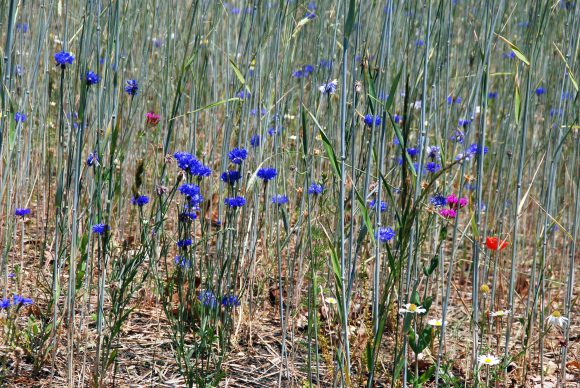
IFNH Wildflower Meadow. Photo: Jennifer Simon.
You’re going to have to burn some calories regardless of which direction you approach the main floor of the Institute of Food, Nutrition and Health. But whether hoofing it up a long flight of stairs or a shorter jaunt from the courtyard, you’ll likely be distracted by the view and not even mind the workout. Students, alumni and faculty in the Department of Landscape Architecture (LA) have had a hand in creating the eyecatching views that grace the ascent to the building. First came the alumni-designed EcoWall flanking a long interior staircase. Then came the student-designed landscaped garden along the gentle slope of the courtyard, planted in the spring. And finally, the glorious meadow in summer bloom along the steep slope at the front entrance of the building, designed by an alum and used as an outdoor classroom.
Department of Landscape Architecture associate professor Jean Marie Hartman utilized her research and experience in the ecology of meadow design to provide suggestions to university landscape architect and LA alum Brian Clemson (CC ’87) about the planting and management of the site. The meadow provides an excellent teaching opportunity for landscape and ecology students, and Hartman is photo-documenting its appearance and keeping a record of the plants that are growing there to use in courses that she teaches. Hartman’s students are also collecting plant samples that will be placed in the Rutgers Chrysler Herbarium.
As of late June, blooms of pink, purple, yellow, orange and blue peek out through wisps of tall annual rye that was specifically chosen to stabilize the soil and prevent erosion on the steep incline, giving the indigenous wildflowers time to take hold, and eventually, take over. Due to the dry conditions experienced this spring, there was concern over the rye as a potential fire hazard. A recent plan that has been developed is to cut back the top five to six inches of growth, which would eliminate much of the rye but encourage flower growth lower to the ground. In addition, the turfgrass buffer around the perimeter will be expanded as well.
What’s up in the IFN&H Meadow?
The following photo documentation of the meadow is the late June installment by Jean Marie Hartman and student Allison Severino (SEBS 2017) (Photos by Allison Severino), 6/23/2016.
The annual rye has run its course and is now being replaced by a large variety of wildflowers.
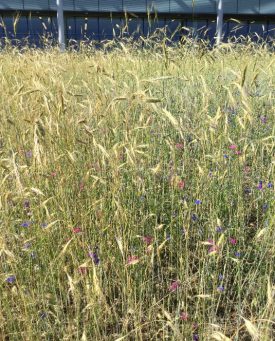
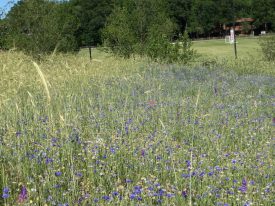
The standing straw of the annual rye provides a bit of shading for the seedlings that are coming up; the seed heads on the rye will add to the seed bank of the species that will populate the meadow next spring. Over time, the rye will be replaced by warm season grasses that green up and flower later in the spring and throughout the summer. Right now we have to search carefully to find the first year growth of these eventual dominants.
As of today, blackeyed susans are clearly visible even as you drive by the meadow on Dudley Road.

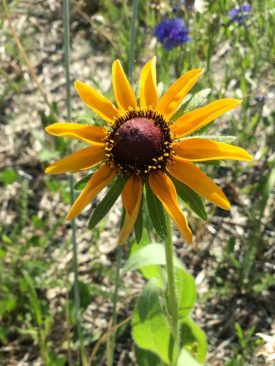
In addition, a number of showy wildflowers can be seen through closer inspection. For example, the bright magenta of the catchfly (Silene armeria) pops out from the background of golds and greens. The intense purple of the rocket larkspur (Delphinium ajacis) stands in contrast to the softer blues of the cornflower (Centaurea cyanus).
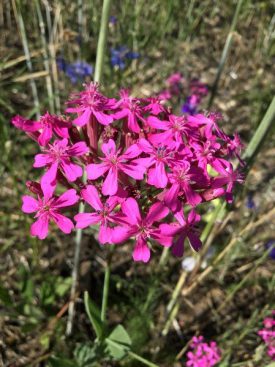
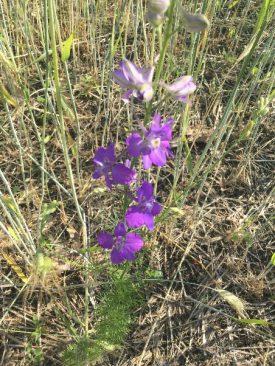
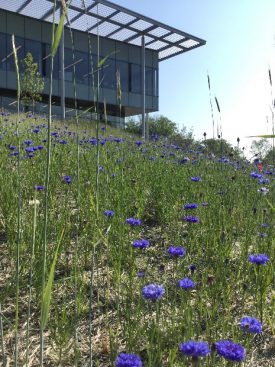 More time and searching will reward you with wallflowers (Cheiranthus allionii), poppies (Papaver rhoea) and primrose (Oenothera speciose).
More time and searching will reward you with wallflowers (Cheiranthus allionii), poppies (Papaver rhoea) and primrose (Oenothera speciose).
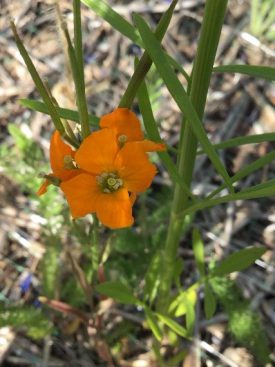
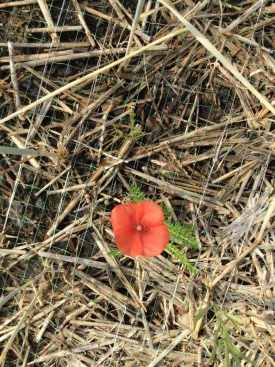
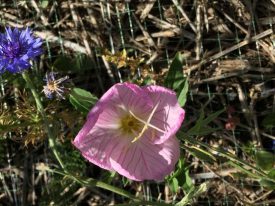 ENJOY!
ENJOY!

